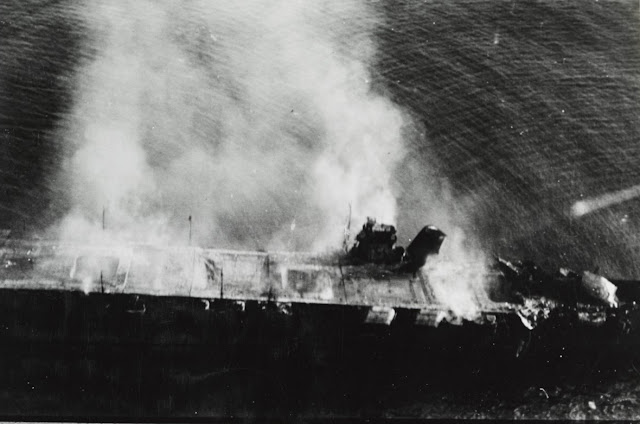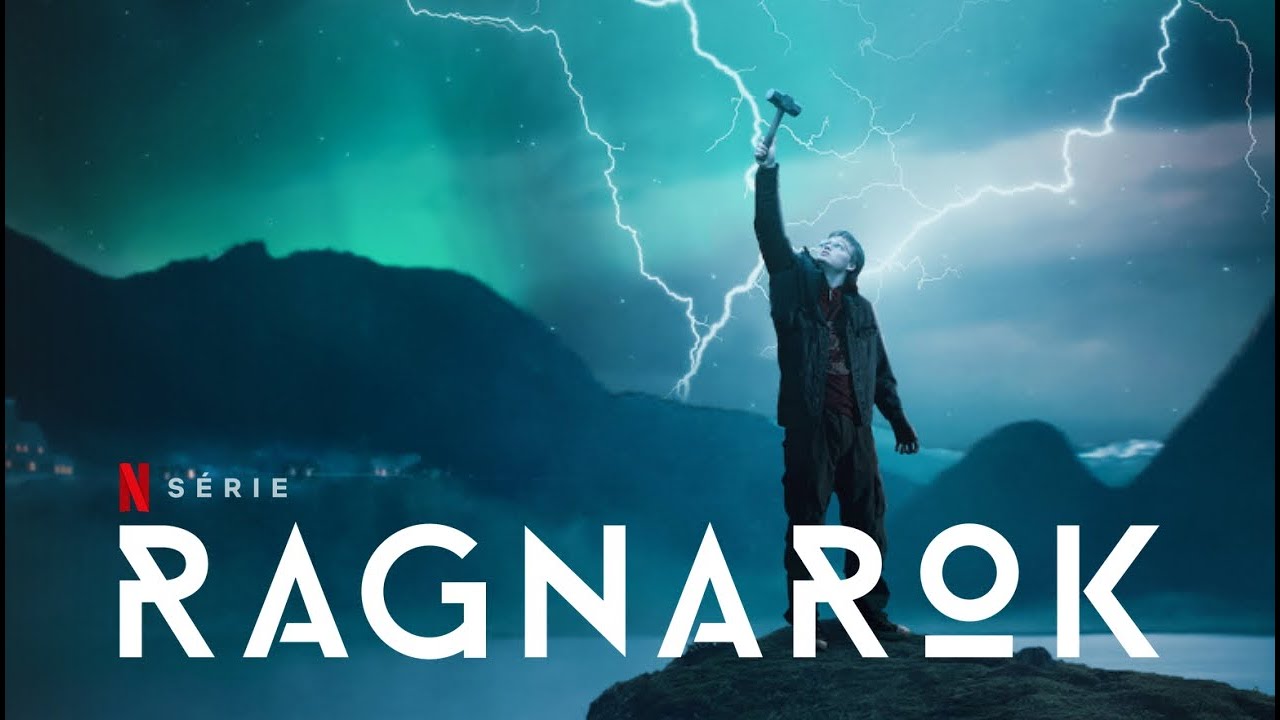The Battle of Midway
Why did the Battle of Midway start?
The Battle of Midway was a decisive naval battle in the Pacific Theater of World War II that took place on 4–7 June 1942, six months after Japan's attack on Pearl Harbor and one month after the Battle of the Coral Sea.The United States Navy under Admirals Chester W. Nimitz, Frank J. Fletcher, and Raymond
Background
Battle of midway infographic
The Battle of Midway was a decisive naval battle in the Pacific Theater of World War II that took place on 4–7 June 1942, six months after Japan's attack on Pearl Harbor and one month after the Battle of the Coral Sea.The United States Navy under Admirals Chester W. Nimitz, Frank J. Fletcher, and Raymond
A. Spruance defeated an attacking fleet of the Imperial Japanese Navy under Admirals Isoroku Yamamoto, Chūichi Nagumo, and Nobutake Kondō near Midway Atoll, inflicting devastating damage on the Japanese fleet that proved irreparable. Military historian John Keegan called it "the most stunning and decisive blow in the history of naval warfare" while naval historian Craig Symonds called it "one of the most consequential naval engagements in world history, ranking alongside Salamis, Trafalgar, and Tsushima Strait, as both tactically decisive and strategically influential".
The Japanese operation, like the earlier attack on Pearl Harbor, sought to eliminate the United States as a strategic power in the Pacific, thereby giving Japan a free hand in establishing its Greater East Asia Co-Prosperity Sphere.
The Japanese hoped another demoralizing defeat would force the U.S. to capitulate in the Pacific War and thus ensure Japanese dominance in the Pacific. Luring the American aircraft carriers into a trap and occupying Midway was part of an overall "barrier" strategy to extend Japan's defensive perimeter, in response to the Doolittle air raid on Tokyo. This operation was also considered preparatory for further attacks against Fiji, Samoa, and Hawaii itself.
The plan was handicapped by faulty Japanese assumptions of the American reaction and poor initial dispositions. Most significantly, American cryptographers were able to determine the date and location of the planned attack, enabling the forewarned U.S. Navy to prepare its own ambush. Four Japanese and three American aircraft carriers participated in the battle.
The four Japanese fleet carriers—Akagi, Kaga, Sōryū and Hiryū, part of the six-carrier force that had attacked Pearl Harbor six months earlier—were sunk, as was the heavy cruiser Mikuma. The U.S. lost the carrier Yorktown and the destroyer Hammann.
After Midway and the exhausting attrition of the Solomon Islands campaign, Japan's capacity to replace its losses in materiel (particularly aircraft carriers) and men (especially well-trained pilots and maintenance crewmen) rapidly became insufficient to cope with mounting casualties, while the United States' massive industrial and training capabilities made losses far easier to replace. The Battle of Midway, along with the Guadalcanal campaign, is widely considered a turning point in the Pacific War.
Battle of midway infographic
Background
The extent of Japanese military expansion in the Pacific, April 1942
After expanding the war in the Pacific to include Western outposts, the Japanese Empire had attained its initial strategic goals quickly, taking the Philippines, Malaya, Singapore, and the Dutch East Indies (modern Indonesia); the latter, with its vital oil resources, was particularly important to Japan. Because of this, preliminary planning for a second phase of operations commenced as early as January 1942.
There were strategic disagreements between the Imperial Army (IJA) and Imperial Navy (IJN), and infighting between the Navy's GHQ and Admiral Isoroku Yamamoto's Combined Fleet, and a follow-up strategy was not formed until April 1942.
Admiral Yamamoto finally won the bureaucratic struggle with a thinly veiled threat to resign, after which his plan for the Central Pacific was adopted.
Yamamoto's primary strategic goal was the elimination of America's carrier forces, which he regarded as the principal threat to the overall Pacific campaign. This concern was acutely heightened by the Doolittle Raid on 18 April 1942, in which 16 U.S. Army Air Forces B-25 Mitchell bombers launched from USS Hornet bombed targets in Tokyo and several other Japanese cities. The raid, while militarily insignificant, was a shock to the Japanese and showed the existence of a gap in the defenses around the Japanese home islands as well as the accessibility of Japanese territory to American bombers.
This, and other successful hit-and-run raids by American carriers in the South Pacific, showed that they were still a threat, although seemingly reluctant to be drawn into an all-out battle. Yamamoto reasoned that another air attack on the main U.S. Naval base at Pearl Harbor would induce all of the American fleet to sail out to fight, including the carriers. However, considering the increased strength of American land-based air power on the Hawaiian Islands since the 7 December attack the previous year, he judged that it was now too risky to attack Pearl Harbor directly.
Instead, Yamamoto selected Midway, a tiny atoll at the extreme northwest end of the Hawaiian Island chain, approximately 1,300 miles (1,100 nautical miles; 2,100 kilometres) from Oahu. This meant that Midway was outside the effective range of almost all of the American aircraft stationed on the main Hawaiian islands. Midway was not especially important in the larger scheme of Japan's intentions, but the Japanese felt the Americans would consider Midway a vital outpost of Pearl Harbor and would therefore be compelled to defend it vigorously. The U.S. did consider Midway vital: after the battle, establishment of a U.S. submarine base on Midway allowed submarines operating from Pearl Harbor to refuel and re-provision, extending their radius of operations by 1,200 miles (1,900 km). In addition to serving as a seaplane base, Midway's airstrips also served as a forward staging point for bomber attacks on Wake Island.
Battle of midway infographic
Yamamoto's plan: Operation MI
Midway Atoll, several months before the battle. Eastern Island (with the airfield) is in the foreground, and the larger Sand Island is in the background to the west.
Typical of Japanese naval planning during World War II, Yamamoto's battle plan for taking Midway (named Operation MI) was exceedingly complex. It required the careful and timely coordination of multiple battle groups over hundreds of miles of open sea. His design was also predicated on optimistic intelligence suggesting that USS Enterprise and USS Hornet, forming Task Force 16, were the only carriers available to the U.S. Pacific Fleet. During the Battle of the Coral Sea one month earlier, USS Lexington had been sunk and USS Yorktown suffered considerable damage such that the Japanese believed she too had been lost. However, following hasty repairs at Pearl Harbor, Yorktown sortied and would go on to play a critical role in the discovery and eventual destruction of the Japanese fleet carriers at Midway. Finally, much of Yamamoto's planning, coinciding with the general feeling among the Japanese leadership at the time, was based on a gross misjudgment of American morale, which was believed to be debilitated from the string of Japanese victories in the preceding months.
Battle of midway infographic
Yamamoto felt deception would be required to lure the U.S. fleet into a fatally compromised situation. To this end, he dispersed his forces so that their full extent (particularly his battleships) would be concealed from the Americans prior to battle. Critically, Yamamoto's supporting battleships and cruisers trailed Vice Admiral Chūichi Nagumo's carrier force by several hundred miles. They were intended to come up and destroy whatever elements of the U.S. fleet might come to Midway's defense once Nagumo's carriers had weakened them sufficiently for a daylight gun battle; this tactic was doctrine in most major navies of the time.
What Yamamoto did not know was that the U.S. had broken parts of the main Japanese naval code (dubbed JN-25 by the Americans), divulging many details of his plan to the enemy. His emphasis on dispersal also meant none of his formations were in a position to support the others. For instance, despite the fact that Nagumo's carriers were expected to carry out strikes against Midway and bear the brunt of American counterattacks, the only warships in his fleet larger than the screening force of twelve destroyers were two Kongō-class fast battleships, two heavy cruisers, and one light cruiser.
Battle of midway infographic
By contrast, Yamamoto and Kondo had between them two light carriers, five battleships, four heavy cruisers, and two light cruisers, none of which would see action at Midway. The light carriers of the trailing forces and Yamamoto's three battleships were unable to keep pace with the carriers of the Kidō Butai and so could not have sailed in company with them. The distance between Yamamoto and Kondo's forces and Nagumo's carriers had grave implications during the battle: the invaluable reconnaissance capability of the scout planes carried by the cruisers and carriers, as well as the additional antiaircraft capability of the cruisers and the other two battleships of the Kongō-class in the trailing forces, was denied to Nagumo.
Aleutian invasion
Main article: Aleutian Islands Campaign
In order to obtain support from the Imperial Japanese Army for the Midway operation, the Imperial Japanese Navy agreed to support their invasion of the United States through the Aleutian Islands of Attu and Kiska, part of the organized incorporated Alaska Territory. The IJA occupied these islands to place the Japanese home islands out of range of U.S. land-based bombers across Alaska, becoming the first foreign nation to occupy U.S. soil since the War of 1812. Similarly, most Americans feared that the occupied islands would be used as potential jumping points for Japanese bombers to attack strategic targets and population centers along the West Coast of the United States. The Japanese operations in the Aleutian Islands (Operation AL) removed yet more ships that could otherwise have augmented the force striking Midway. Whereas many earlier historical accounts considered the Aleutians operation as a feint to draw American forces away, according to the original Japanese battle plan, AL was intended to be launched simultaneously with the attack on Midway. A one-day delay in the sailing of Nagumo's task force resulted in Operation AL beginning a day before the Midway attack.











Comments
Post a Comment